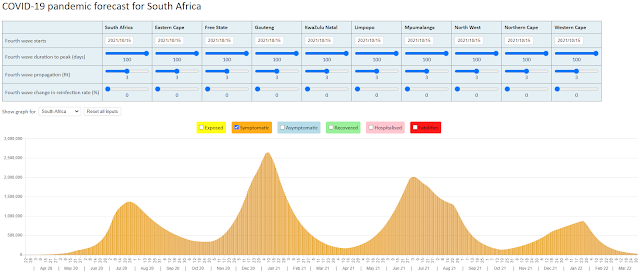Update on COVID 19 tracking in SA

An analysis of the weekly deaths from natural causes as reported by the SA Medical Research Council (SAMRC) shows evidence of elevated excess deaths over the winter months of 2022. The graph below shows the weekly deaths reported by SAMRC in excess of the average weekly deaths reported between 1 January 2020 and 15 March 2020. The COVID-19 hospital deaths as reported by the National Institute for Communicable Diseases (NICD) would appear to follow a similar pattern to that shown by the SAMRC excess deaths but with a more muted 5th wave. Anecdotally, the number of COVID-19 cases appear to be on the rise in South Africa although COVID-19 cases are no longer reported on a regular basis (outside of a hospital setting). The above graphs show that the COVID-19 disease severity is certainly not near the levels experienced in the first three waves. 4 November 2022


















